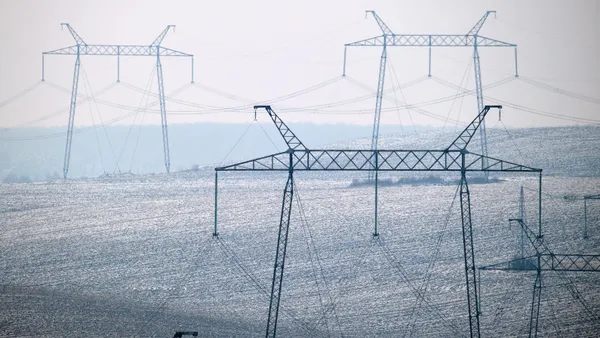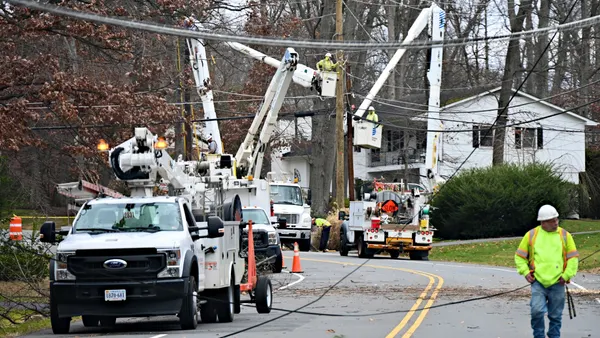Dive Brief:
- The Federal Energy Regulatory Commission Oct. 30 rejected an Energy Security Improvements (ESI) plan proposed by the New England Independent System Operator (ISO-NE), concluding it would "impose substantial costs" without meaningful improvements to the region's grid resilience.
- The operator in April proposed a trio of new market products to help ensure reliability during fuel shortages and cold snaps, when natural gas may be in short supply.
- Publicly-owned utilities opposed to the ESI proposal say it could have cost consumers an additional $257 million dollars a year, and called FERC's decision a "win for New England electric consumers."
Dive Insight:
ISO officials say they are contemplating next steps, while some utilities say they are ready to help address the issue.
"There are other more sensible and consumer-protective ways to address regional fuel security," Massachusetts Municipal Wholesale Electric Company (MMWEC) CEO Ronald DeCurzio said in a statement. "Now that ESI has been rejected, we look forward to working with ISO on a better mechanism."
MMWEC, along with the New Hampshire Electric Cooperative and the Connecticut Municipal Electric Energy Cooperative, opposed the ESI. The organizations said it would raise consumer costs without guaranteeing improvements to fuel security and noted that the proposal was voluntary.
"The voluntary nature of the ESI market design would allow resources that have not made advance energy arrangements to simply not participate, undermining ESI’s ability to address fuel security during those periods," FERC said in its order.
The ISO, in a statement, said it is still "reviewing the decision, and will discuss next steps with stakeholders. We remain committed to finding market-based solutions to solving the region’s energy security challenges."
The grid operator's proposal included three new operational capabilities: a Day-Ahead Energy Imbalance Reserve; Day-Ahead Generation Contingency Reserve; and Day-Ahead Replacement Energy Reserve (RER) that would help restore depleted operating reserves and address load forecast errors.
However, FERC said an impact assessment had demonstrated that the ESI "would not materially reduce reserve shortages or the potential for loss of load," but would increase costs by $20 million to $257 million per year.
FERC said the proposal fails to sufficiently address a problem of "misaligned incentives," in that "fuel secure resources may not be sufficiently incented to make additional investments in energy supply arrangements, resulting in adverse reliability consequences."
Regulators said that while the procurement of day-ahead reserves would allow the grid operator to obtain additional resource capability, "the record in this proceeding demonstrates that one day is not a sufficient timeframe for resources to take the steps necessary to perform during stressed conditions."
The grid operator's April filing also included an alternative proposal that was supported by the New England Power Pool (NEPOOL), which amended the ESI to limit the calculation of the RER quantity and resulting costs to the months of December through February, among other things.
FERC said that NEPOOL's alternative could result in lower costs to consumers, but it still rejected the proposal. Regulators said the alternative contained "the same deficiencies that render ISO-NE’s proposal unjust and unreasonable."














